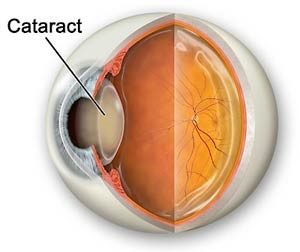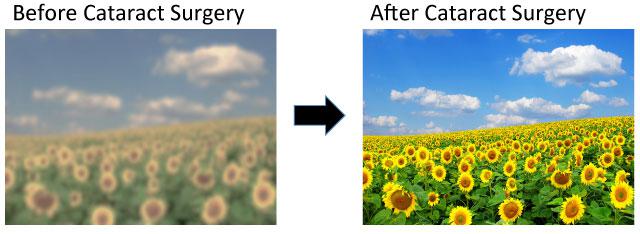Cataract Symptoms
Inside of our eyes, we have a natural lens. At younger ages, this lens is clear, and we simply call it a “lens.” Over time, as a natural part of aging (just like getting gray hair or wrinkles), this lens becomes more cloudy. Eventually, the lens in your eye becomes so cloudy that we stop calling it a “lens” and we start calling it a “cataract.” A cataract is, therefore, a cloudy lens inside of your eye.

Besides age, other conditions can also influence the development of cataracts. For example, certain hereditary disorders, other medical problems (such as diabetes), eye injuries, eye surgeries (such as retinal surgery), and radiation treatment to the head or upper body can cause or accelerate the lens becoming cloudy.
Regardless of how they develop, cataracts can cause a variety of symptoms: blurry vision, inability to see small print, difficulty with driving, glare, light sensitivity, halos around lights, double vision, and/or muted colors. Early on, these symptoms can be managed with glasses. However, at some point, the cloudy lens inside of the eye (the cataract) becomes so severe that no lenses in front of the eye (spectacles) are sufficient to correct the vision. At this time, cataract surgery must be considered.

Although the vision changes caused by cataracts are usually gradual, no doctor can predict with certainty when exactly a cataract will become severe enough to warrant surgery.



